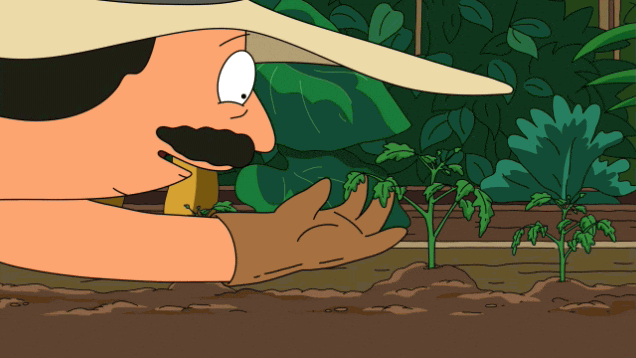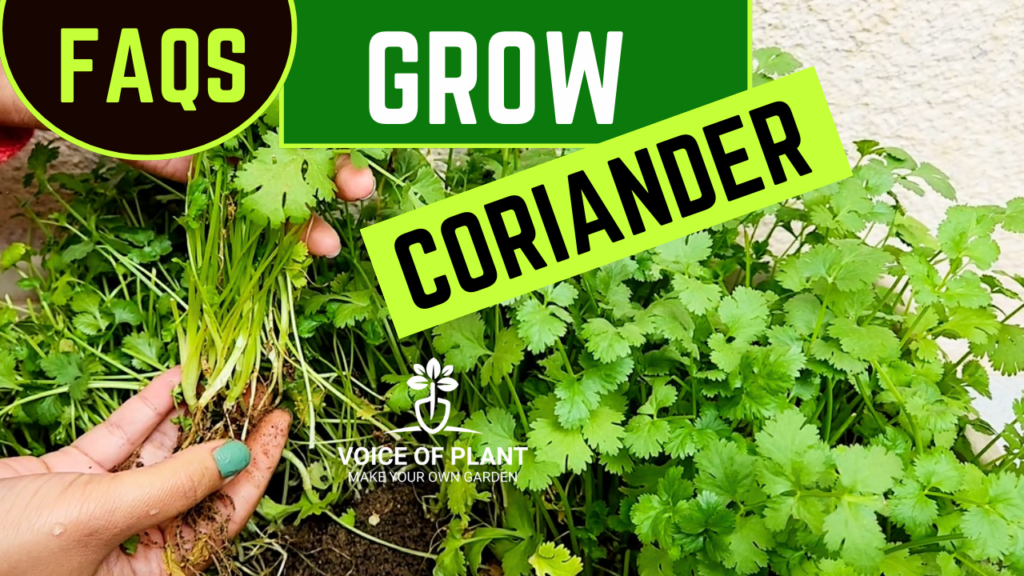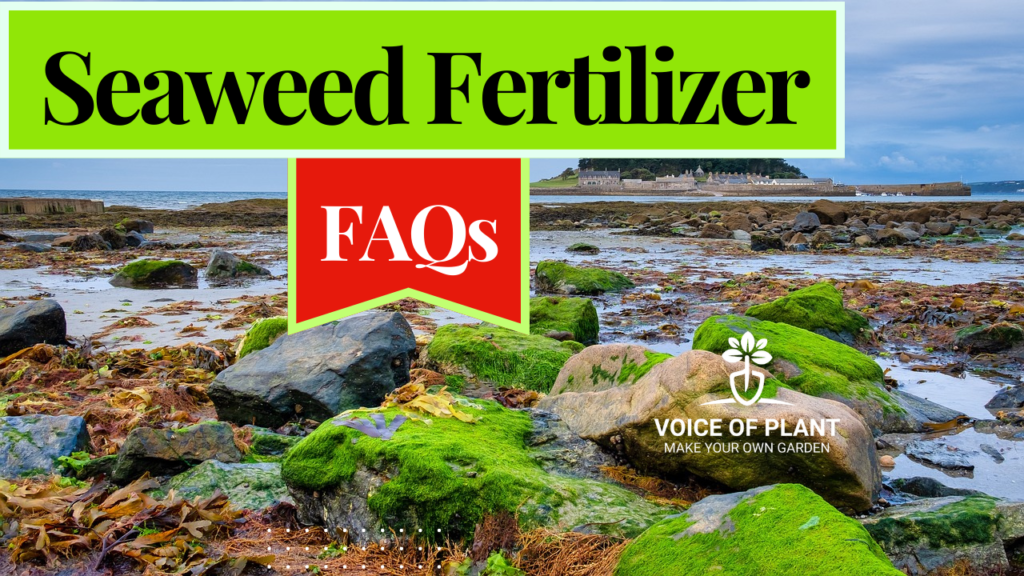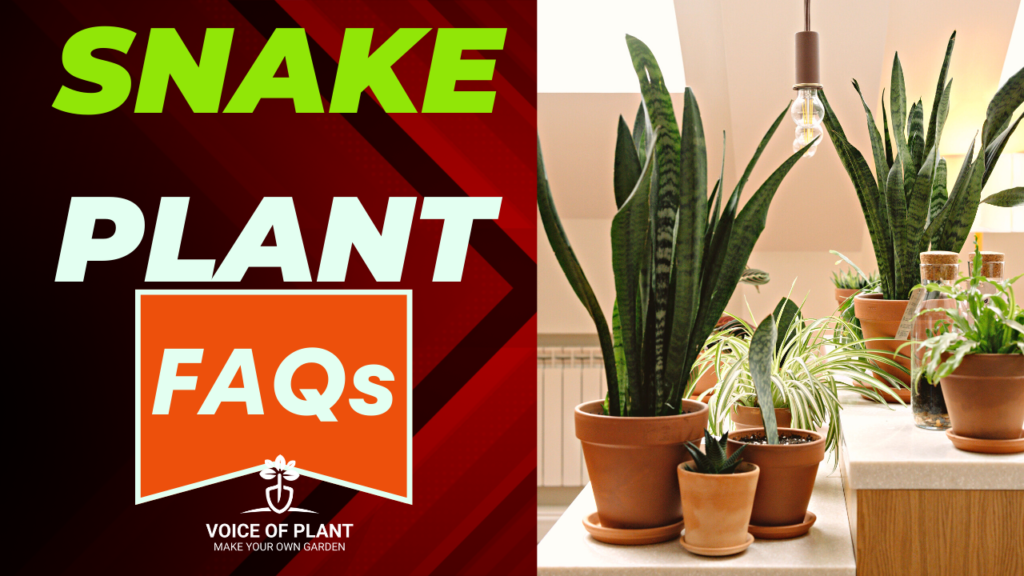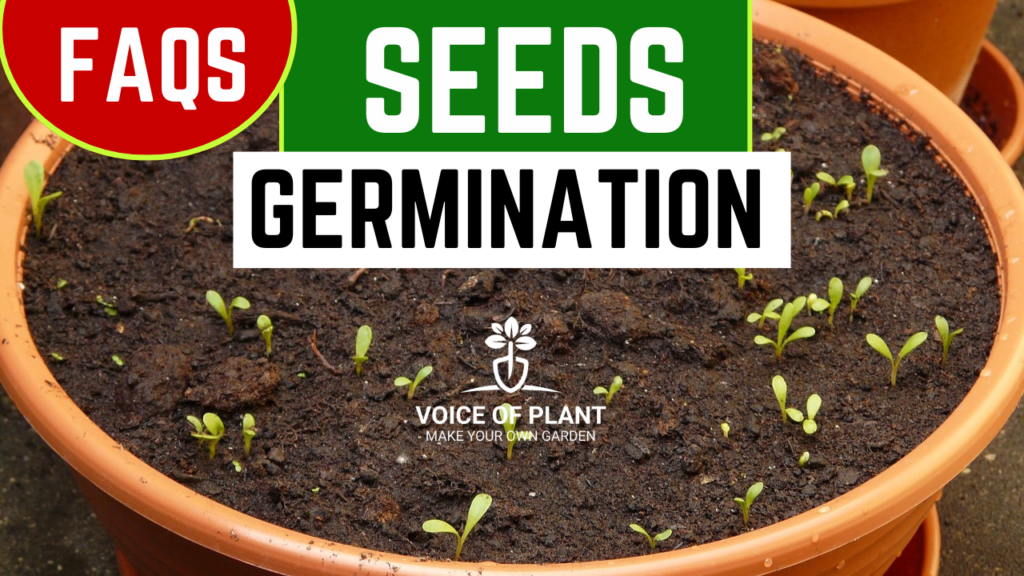Coriander is relatively easy to grow, making it a favorite among home gardeners. It thrives in well-drained soil and prefers moderate sunlight. This herb is not only valued for its culinary uses but is also recognized for potential health benefits.
In this article, we will answer the most frequently asked questions (FAQs) on how to grow coriander from seeds such as soil, pot size, temperature, watering, fertilizer, etc.
FAQs on How to grow Coriander from Seeds
Q1. What is the best season for growing coriander seeds?

Ans: Coriander is best grown in cooler temperatures. In most regions, spring and fall are ideal seasons.
- The ideal temperature for growing coriander is during the period from October to March, which corresponds to the mild and cool seasons.
Q2. What is the best pot shape & size for growing coriander?
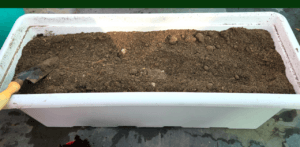
Ans: To cultivate coriander, it is advisable to use rectangular containers that are 6 inches deep and equipped with drainage holes at the bottom.
Q3. What is the perfect soil type for growing coriander seeds?
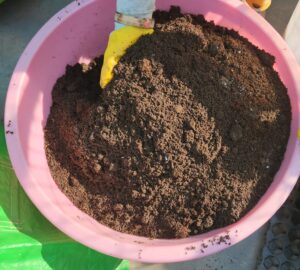
Ans: To cultivate coriander successfully, the soil should be soft and porous.
- In compacted soil, coriander seeds might initially germinate, but they risk being eventually buried within the soil.
4. How much sunlight is required for the coriander plant’s growth?
Ans: Seeds can germinate in the absence of direct sunlight.
- After germination, Coriander prefers full sunlight but can tolerate partial shade.
- Ensure the plant receives at least 3-4 hours of sunlight per day for optimal growth.
Note:
- Adequate sunlight is essential for the overall development of the plant.
Q5. How long does it take for coriander seeds to germinate?

Ans: Coriander seeds typically germinate in 7 to 10 days, depending on factors like temperature and soil conditions.
- Maintain a consistent moisture level during the germination period.
Read article on:
How to grow Coriander from seeds
Q6. How often should I water coriander seeds?

Ans: Keep the soil consistently moist but not waterlogged.
- Water when the top inch of soil feels dry. Avoid overwatering, as coriander is susceptible to root rot.
Q7. How to water coriander plant?

Ans: It is important to refrain from pouring water directly from the top, as this could lead to the folding of coriander leaves.
- Instead, water the plant from a corner of the pot to ensure even distribution of water throughout the soil.
Q8. Which fertilizer can be given to the coriander plant?
Ans: Use a balanced, water-soluble fertilizer every 2-3 weeks during the growing season.
- Organic options like compost tea or mustard cake liquid fertilizer can also be beneficial.
Q9. How often can I harvest coriander?

Ans: Start harvesting when the plant reaches 6 inches in height.
- Harvest leaves regularly, but avoid removing more than one-third of the plant at a time.
- Allow some stems to produce seeds for future planting.
Q10. What are the health benefits of consuming coriander?

Ans: Coriander is rich in antioxidants and may have anti-inflammatory properties.
- It can be beneficial in enhancing digestive function, regulating cholesterol levels, managing conditions like diabetes and kidney issues, among other health benefits.
- With its rich content of proteins, fats, fibers, carbohydrates, and minerals, it serves as a nutritious and potent food.
Follow our Social media channel:
1. Voice of Plant – YouTube Channel
2. Voice of Plant Facebook Page
3. Instagram Voice of Plant Channel
Enjoy healthy and Organic Coriander!
